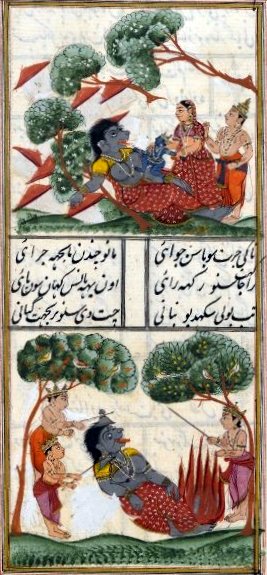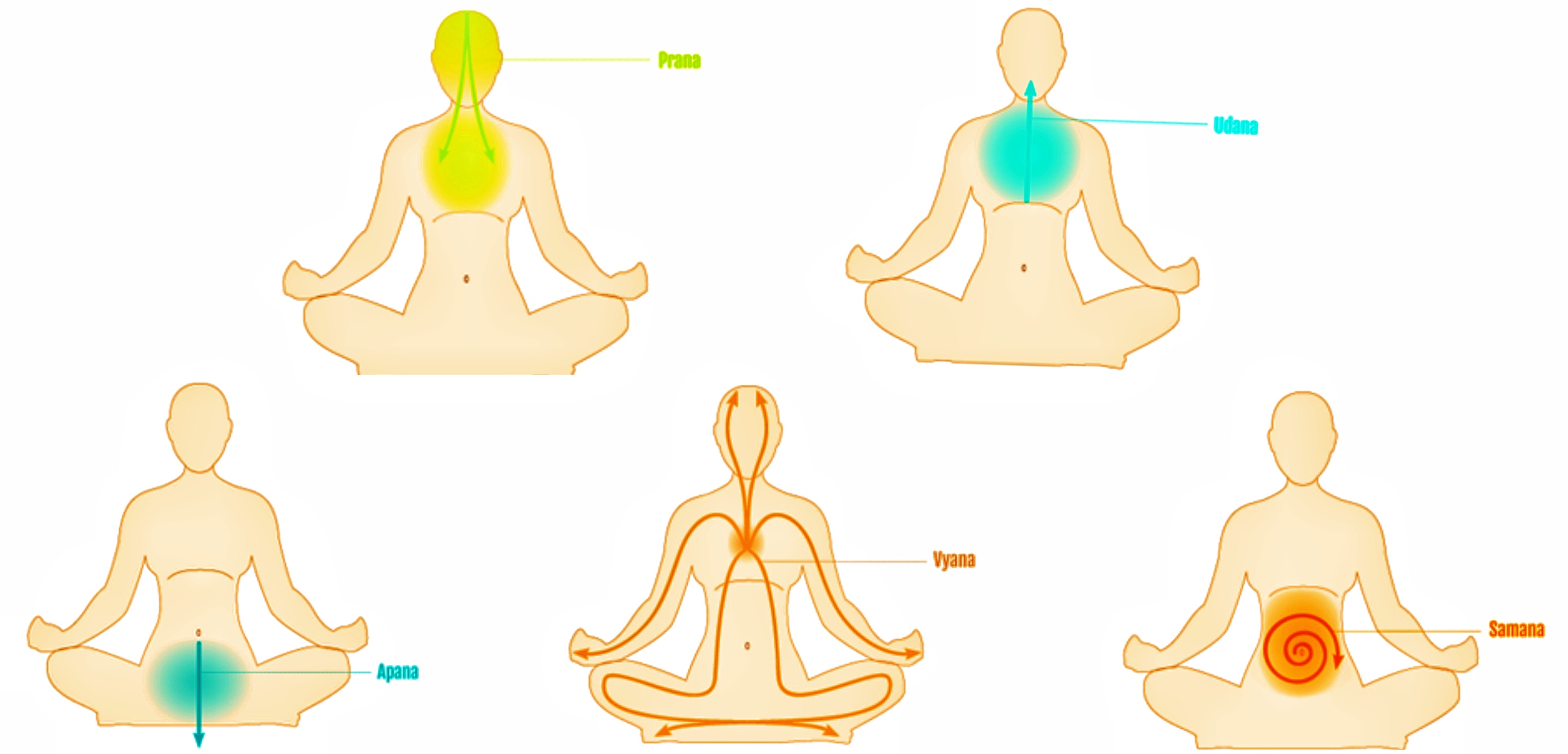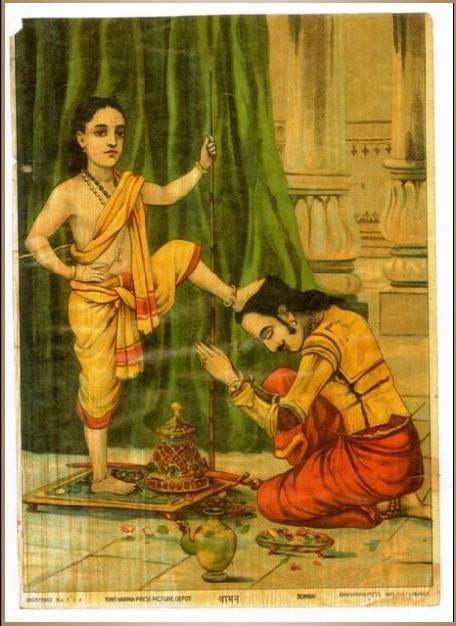|
Putana
In Hinduism, Pūtanā () is a rakshasi (demoness), who was killed by the infant-god Krishna. Putana disguises as a young, beautiful woman and tries to kill the god by breast-feeding poisoned milk; however Krishna sucks her milk as well as her life via her breasts. Putana is also considered as a foster-mother of Krishna as she breast-fed him. By offering her milk, Putana had performed "the supreme act of maternal devotion", in the shadow of her evil motives. The legend is told and retold in Hindu scriptures and some Indian books, which portray her variously as an evil hag or a demoness who surrendered herself to Krishna, though she initially came with evil motives. Putana is interpreted as an infantile disease or bird, symbolizing danger to an infant or desire respectively, and even as a symbolic bad mother. She is included in a group of malevolent Hindu mother goddesses called the Matrikas and also in the group of Yoginis and Grahinis (Seizers). Ancient Indian medical texts pres ... [...More Info...] [...Related Items...] OR: [Wikipedia] [Google] [Baidu] |
Yashoda
Yashoda ( sa, यशोदा, translit=Yaśodā) is the foster-mother of Krishna and the wife of Nanda Baba, Nanda. She is described in the Puranic texts of Hinduism as the wife of Nanda Baba, Nanda, the chieftain of Gokul, Gokulam, and the sister of Rohini Devi, Rohini. According to the Bhagavata Purana, Krishna was born to Devaki, but Krishna's father, Vasudeva Anakadundubhi, Vasudeva, brought the newborn Krishna to his cousin Nanda (Hinduism), Nanda, and his wife, Yashoda, in Gokul, Gokulam. This was for his upbringing, as well as to protect Krishna from Devaki's brother, Kamsa, the tyrannical king of Mathura, Uttar Pradesh, Mathura. Etymology The name Yashoda means 'one who is giver (da, ) of fame or glory (Yash, )'. Legends Origin According to the ''Bhagavata Purana'', Yashoda was the incarnation of Dhara, the wife of the Vasu, Drona. Little is known about Yashoda's early life, other than her marriage with Nanda Baba, Nanda. Yashoda's Father Sri Sumukha was the tre ... [...More Info...] [...Related Items...] OR: [Wikipedia] [Google] [Baidu] |
Bhagavata Purana
The ''Bhagavata Purana'' ( sa, भागवतपुराण; ), also known as the ''Srimad Bhagavatam'', ''Srimad Bhagavata Mahapurana'' or simply ''Bhagavata'', is one of Hinduism's eighteen great Puranas (''Mahapuranas''). Composed in Sanskrit by Veda Vyasa, it promotes ''bhakti'' (devotion) towards Krishna, integrating themes from the Advaita (monism) philosophy of Adi Shankara, the Vishishtadvaita (qualified monism) of Ramanujacharya and the Dvaita (dualism) of Madhvacharya. It is widely available in almost all Indian languages. The ''Bhagavata Purana'', like other puranas, discusses a wide range of topics including cosmology, astronomy, genealogy, geography, legend, music, dance, yoga and culture. As it begins, the forces of evil have won a war between the benevolent ''Deva (Hinduism), devas'' (deities) and evil ''asuras'' (demons) and now rule the universe. Truth re-emerges as Krishna, (called "Hari#Usage in Indian religion and mythology, Hari" and "Vāsudeva" in the ... [...More Info...] [...Related Items...] OR: [Wikipedia] [Google] [Baidu] |
Vamana
Vamana (), also known as Trivikrama (), Urukrama (), Upendra (), Dadhivamana (), and Balibandhana () is an avatar of the Hindu deity Vishnu. He is the fifth avatar of Vishnu, and the first Dashavatara in the Treta Yuga, after Narasimha. Originating in the Vedas, Vamana is most commonly associated in the Hindu epics and Puranas with the legend of taking back the three worlds (collectively referred to as the ''Trailokya'') from the daitya-king Bali by taking three steps to restore the cosmic order. He is the youngest among the adityas, the sons of Aditi and the sage Kashyapa. Nomenclature and etymology 'Vāmana' (Sanskrit वामन) means 'dwarf', 'small' or 'small or short in stature'. It also means 'dwarfish bull', which is notable as Vishnu is directly associated with dwarfish animals (including bulls) in the Vedas (see below). Stated in Puranic literature to be born of the great sage Kashyapa and his wife Aditi, other names or epithets referring to Vamana include: ... [...More Info...] [...Related Items...] OR: [Wikipedia] [Google] [Baidu] |
Matrikas
Matrikas (Sanskrit: मातृका (singular), IAST: mātṝkās, lit. "divine mothers") also called Matar or Matri, are a group of mother goddesses who are always depicted together in Hinduism. The Matrikas are often depicted in a group of seven, the Saptamatrika(s) (Seven Mothers). However, they are also depicted as a group of eight, the Ashtamatrika(s). In the '' Brihat Samhita'', Varahamihira says that "Mothers are to be made with cognizance of (different major Hindu) gods corresponding to their names." They are associated with these gods as their spouses or their energies (''Shaktis''). Brahmani emerged from Brahma, Vaishnavi from Vishnu, Maheshvari from Shiva, Indrani from Indra, Kaumari from Skanda, Varahi from Varaha and Chamunda from Devi. and additionals are Narasimhi from Narasimha and Vinayaki from Ganesha. Originally believed to be a personification of the seven stars of the star cluster the Pleiades, they became quite popular by the seventh century and a s ... [...More Info...] [...Related Items...] OR: [Wikipedia] [Google] [Baidu] |
Kamsa
Kamsa ( sa, कंस, Kaṃsa, translit-std=IAST) was the tyrant ruler of the Vrishni kingdom, with its capital at Mathura. He is variously described in Hindu literature as either a human or an asura; The Puranas describe him as an asura, while the Harivamśa describes him as an asura reborn in the body of a man. His royal house was called Bhoja; thus, another of his names was Bhojapati. He was the cousin of Devaki, the mother of the deity Krishna; Krishna ultimately fulfilled a prophecy by slaying Kamsa. Kamsa was born to King Ugrasena and Queen Padmavati. However, out of ambition, and upon the advice of his personal confidantes, Banasura and Narakasura, Kamsa decided to overthrow his father, and install himself as the King of Mathura. Therefore, upon the guidance of another advisor, Chanura, Kamsa decided to marry Asti and Prapti, the daughters of Jarasandha, King of Magadha. After a heavenly voice prophesied that Devaki's eighth son would slay him, Kamsa imprisoned Devak ... [...More Info...] [...Related Items...] OR: [Wikipedia] [Google] [Baidu] |
Vraj
Braj, also known as Vraj, Vraja, Brij or Brijbhoomi, is a region in India on both sides of the Yamuna river with its centre at Mathura-Vrindavan in Uttar Pradesh state encompassing the area which also includes Palwal and Ballabhgarh in Haryana state, Bharatpur district in Rajasthan state and Morena District in Madhya Pradesh.Janet Cochrane, 2008Asian Tourism: Growth and Change page 249. Within Uttar Pradesh it is very well demarcated culturally, the area stretches from the Mathura, Aligarh, Agra, Hathras and districts up to the Farrukhabad, Mainpuri and Etah districts. Braj region is associated with Radha and Krishna who according to scriptures were born in Barsana and Mathura respectively. It is the main centre of Krishna circuit of Hindu pilgrimage. It is located 150 km south of Delhi and 50 km northwest of Agra. Etymology The term Braj is derived from the Sanskrit word ''vraja (व्रज)''. Vraja was first mentioned in Rigveda, and in Sanskrit it means a pa ... [...More Info...] [...Related Items...] OR: [Wikipedia] [Google] [Baidu] |
Lakshmi
Lakshmi (; , sometimes spelled Laxmi, ), also known as Shri (, ), is one of the principal goddesses in Hinduism. She is the goddess of wealth, fortune, power, beauty, fertility and prosperity, and associated with ''Maya'' ("Illusion"). Along with Parvati and Saraswati, she forms the Tridevi of Hindu goddesses. Within the goddess-oriented Shaktism, Lakshmi is venerated as the prosperity aspect of the Mother goddess. Lakshmi is both the consort and the divine energy (''shakti'') of the Hindu god Vishnu, the Supreme Being of Vaishnavism; she is also the Supreme Goddess in the sect and assists Vishnu to create, protect, and transform the universe. She is an especially prominent figure in Sri Vaishnavism, in which devotion to Lakshmi is deemed to be crucial to reach Vishnu. Whenever Vishnu descended on the earth as an avatar, Lakshmi accompanied him as consort, for example, as Sita and Radha or Rukmini as consorts of Vishnu's avatars Rama and Krishna, respectively. The eight ... [...More Info...] [...Related Items...] OR: [Wikipedia] [Google] [Baidu] |
Prana
In yoga, Indian medicine and Indian martial arts, prana ( sa2, प्राण, ; the Sanskrit word for breath, " life force", or "vital principle") permeates reality on all levels including inanimate objects. In Hindu literature, prāṇa is sometimes described as originating from the Sun and connecting the elements. Five types of prāṇa, collectively known as the five ''vāyus'' ("winds"), are described in Hindu texts. Ayurveda, tantra and Tibetan medicine all describe ''prāṇa vāyu'' as the basic vāyu from which the other vāyus arise. Prana is divided into ten main functions: The five Pranas – Prana, Apana, Udana, Vyana and Samana – and the five Upa-Pranas – Naga, Kurma, Devadatta, Krikala and Dhananjaya. Pranayama, one of the eight limbs of yoga, is intended to expand prana. Etymology V. S. Apte provides fourteen different meanings for the Sanskrit word ' () including breath or respiration; the breath of life, vital air, principle of life (usually plura ... [...More Info...] [...Related Items...] OR: [Wikipedia] [Google] [Baidu] |
Kanaiyalal Maneklal Munshi
Kanhaiyalal Maneklal Munshi (; 30 December 1887 – 8 February 1971), popularly known by his pen name Ghanshyam Vyas, was an Indian independence movement activist, politician, writer and educationist from Gujarat state. A lawyer by profession, he later turned to author and politician. He is a well-known name in Gujarati literature. He founded Bharatiya Vidya Bhavan, an educational trust, in 1938. Munshi wrote his works in three languages namely Gujarati, English and Hindi. Before independence of India, Munshi was part of Indian National Congress and after independence, he joined Swatantra Party. Munshi held several important posts like member of Constituent Assembly of India, minister of agriculture and food of India, and governor of Uttar Pradesh. In his later life, he was one of the founding members of Vishva Hindu Parishad. Early life Munshi was born on 30 December 1887 at Bharuch, a town in Gujarat State of British India. Munshi took admission at Baroda College in 1902 and ... [...More Info...] [...Related Items...] OR: [Wikipedia] [Google] [Baidu] |
Mahabali
Mahabali (IAST: Mahābalī), also known as Bali, Indrasenan, or Māveli, is a daitya king featured in Hinduism. He is the grandson of Prahlada, and a descendant of the sage Kashyapa. There are many versions of his legend, in ancient texts such as the ''Shatapatha Brahmana'', ''Ramayana'', ''Mahabharata'', and several ''Puranas''. According to Hindu literature, he was banished beneath the earth into the ''patala'' (netherworld) by the Vamana avatar of Vishnu. In Hinduism, Mahabali is considered one of the Chiranjivi, a group of eight immortals. It is believed that he will become the King of Svarga (heaven) in the next ''yuga''. In Kerala, King Mahabali is considered to be the noblest and most prosperous ruler, who transformed his kingdom into a heavenly place. His legend is a major part of the annual festival Onam in the state of Kerala, and Balipratipada (the fourth day of Deepavali and first day of Kartika month) festival in North India and Tulunadu. Hinduism Mahabali is de ... [...More Info...] [...Related Items...] OR: [Wikipedia] [Google] [Baidu] |
Demoness Putana 02
A demon is a malevolent supernatural entity. Historically, belief in demons, or stories about demons, occurs in religion, occultism, literature, fiction, mythology, and folklore; as well as in media such as comics, video games, movies, anime, and television series. Belief in demons probably goes back to the Paleolithic age, stemming from humanity's fear of the unknown, the strange and the horrific. ''A Dictionary of Comparative Religion'' edited by S.G.F. Brandon 1970 In ancient Near Eastern religions and in the Abrahamic religions, including early Judaism and ancient-medieval Christian demonology, a demon is considered a harmful spiritual entity which may cause demonic possession, calling for an exorcism. Large portions of Jewish demonology, a key influence on Christianity and Islam, originated from a later form of Zoroastrianism, and was transferred to Judaism during the Persian era. Demons may or may not also be considered to be devils: minions of the Devil. In many tr ... [...More Info...] [...Related Items...] OR: [Wikipedia] [Google] [Baidu] |




.jpg)



